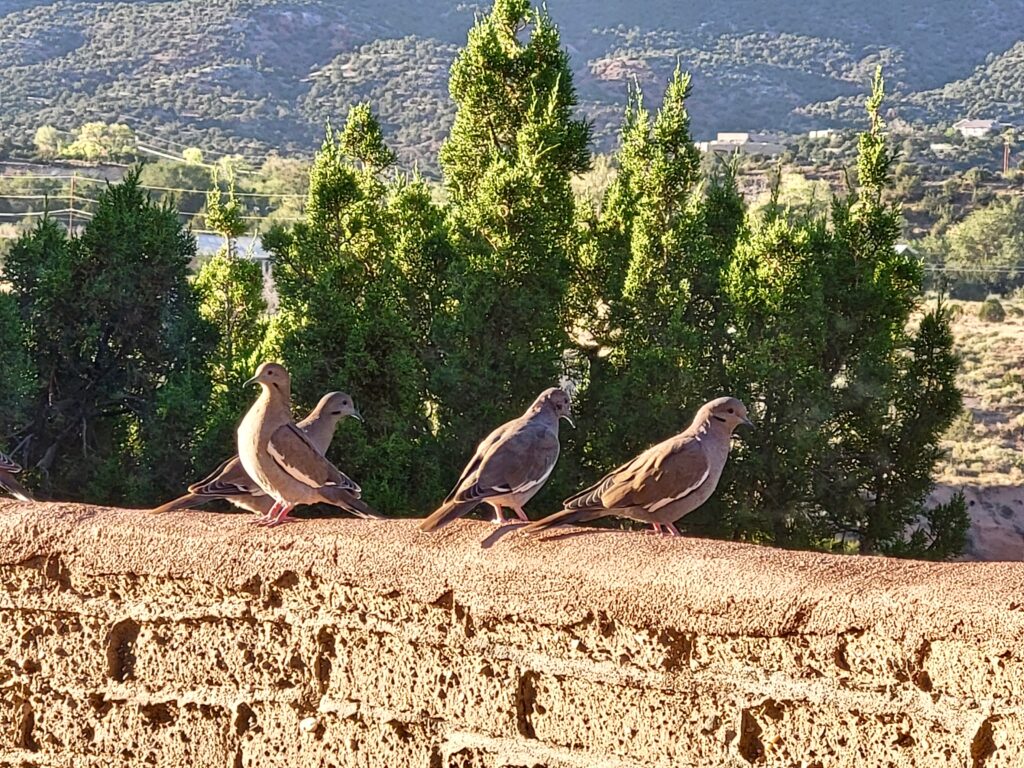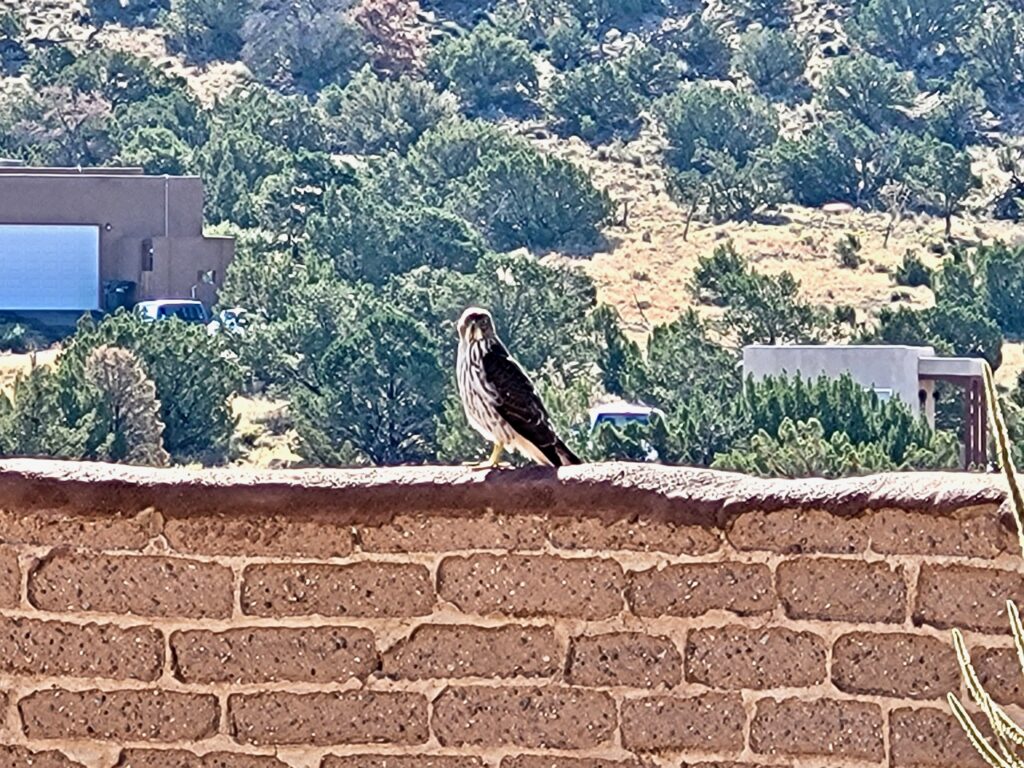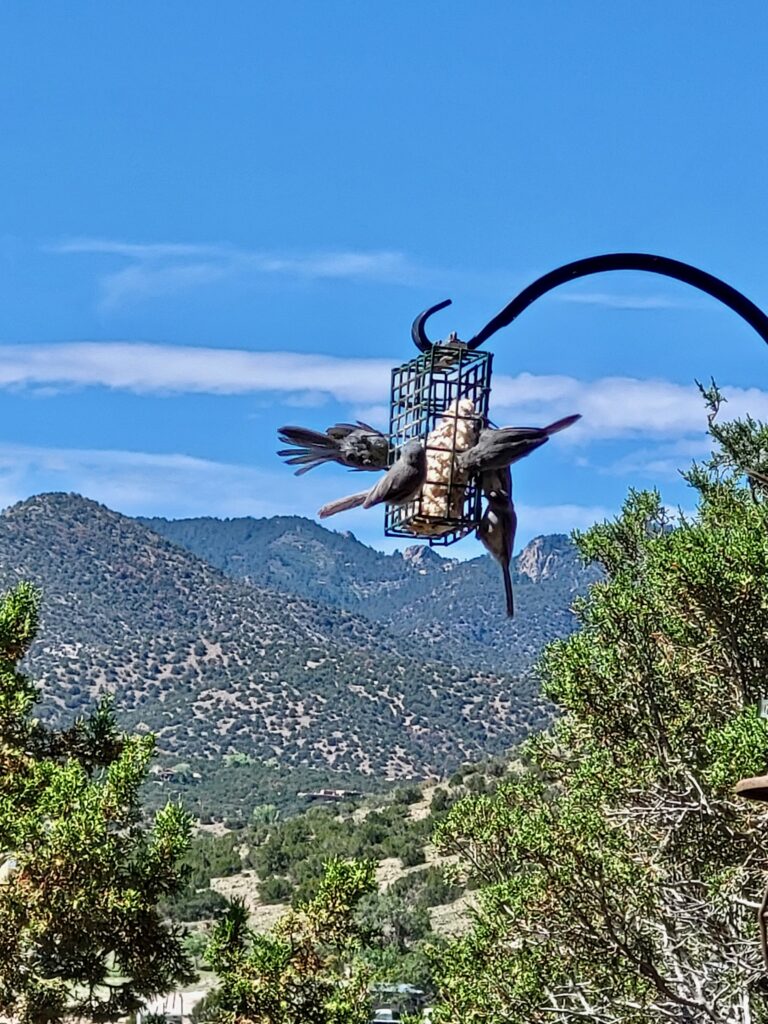I’ve been a birdwatcher since my teens, having picked it up from my mother as she taught me the names of the shore birds when we’d visit Rhode Island beaches: Herring Gull, Bittern, Great Blue Heron, Cat Bird.
I’ve since added many more bird names over the years, as I’ve brought binoculars on my hikes and to the marshes and shores.
For the first time in my life, however, I am adding new birds right outside my window (as I type, actually). My home abuts desert land that has an abundance of plants that birds love: junipers and cottonwoods and salt bush. So, I can have a set of bird feeders with different kinds of seeds for different kinds of birds, in a place that they feel safe enough to visit in droves. Right now, as I type, it’s a comical squad of Gambel’s Quail with their black topknots, along with a company of tiny-but-mighty Lesser Goldfinches who make quick work of my fine thistle seed.
I’ve seen over 20 species of birds out my window, from the usual sparrows, titmice and jays, to more exotic hawks and woodpeckers. Gawking at them often makes work rather difficult! And poor Rufous, my indoor cat, watches all day, quietly chattering desperately in desire.
The birds change a bit over the seasons: the summer hummingbirds have all migrated south, and now I see more Canyon Wrens and Townsends Solitaires than I do in the summer. But whichever birds visit, they are hard at work, nourishing themselves, and in the summer, their offspring. They make me laugh out loud sometimes, and daily give me joy.
One of my teachers, Francesca Mason Boring, often writes about her animal visitors in Eastern Washington State, herds of elk. She writes about what they teach her, and reveals how the intimacy of humans and other non-human animals can offer us surprising, and sometimes mysterious, wisdom.
Animals — elk, my cat Rufous, and birds alike — are always aware of the system that surrounds them, whether they are solitary animals or herd (flock) based. What cues are the birds paying attention to that leads them to my feeder? Smells? Other birds? Just a sense that there is food out there?
And once here, they must navigate a complex social system of other birds (and the occasional chipmunk), all of whom want access to the food. But not only other animals, but the landscape itself — the trees and my adobe wall and perhaps the rain or snow — they are in exquisite dialogue with it all, all the time.
We are just like the birds, my friends. Ah, consciously, we might be in the cultural trance of individualism, but in truth, that is the purest untruth. The reality is that we are just like these birds: always aware of everything around us, navigating, seeking what we need, attentive to the patterns involved as we engage with other humans and their similar and different needs.
And, we are every bit as beautiful. Featherless, to be sure, but beautifully shaped and adorned to cause gasps of joy in anyone who might take the time to notice.
The birds help me notice my place in a complex world, not alone. The birds help me notice my beauty.
What helps you notice your beauty and your connectedness? Share your experiences on my blog, below.



The Cornell University Department of Ornithology maintains a number of databases for birds. One is called The Backyard Bird Count and takes place all over the world. When you register, you get the opportunity to submit a count of birds in your backyard over a two day period once a week from fall to spring. They compile the number and it helps them to determine that health of bird populations everywhere. This is my second year. They also have great webcams set up in Ithaca and many other places. Plus many, many Bird ID courses.